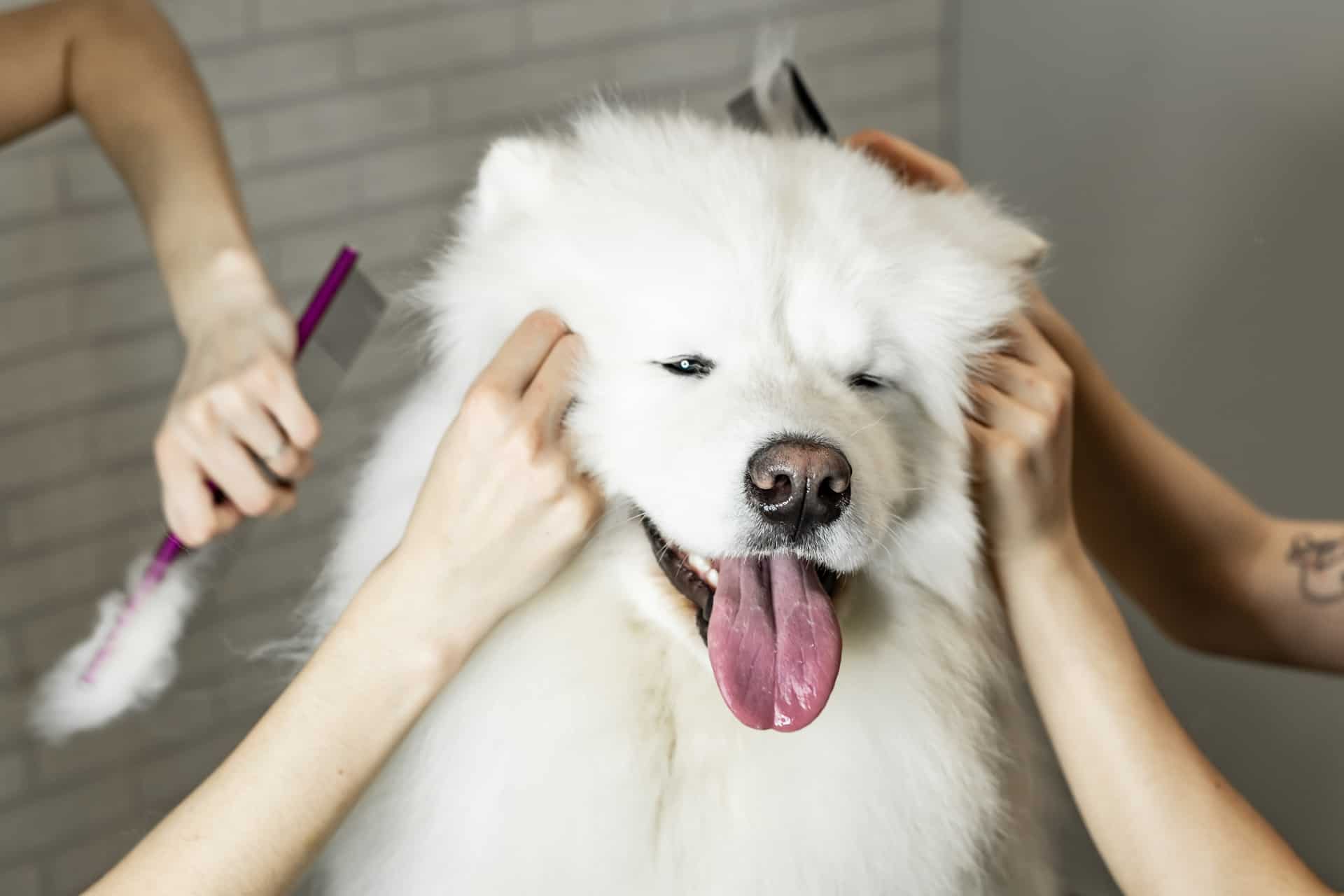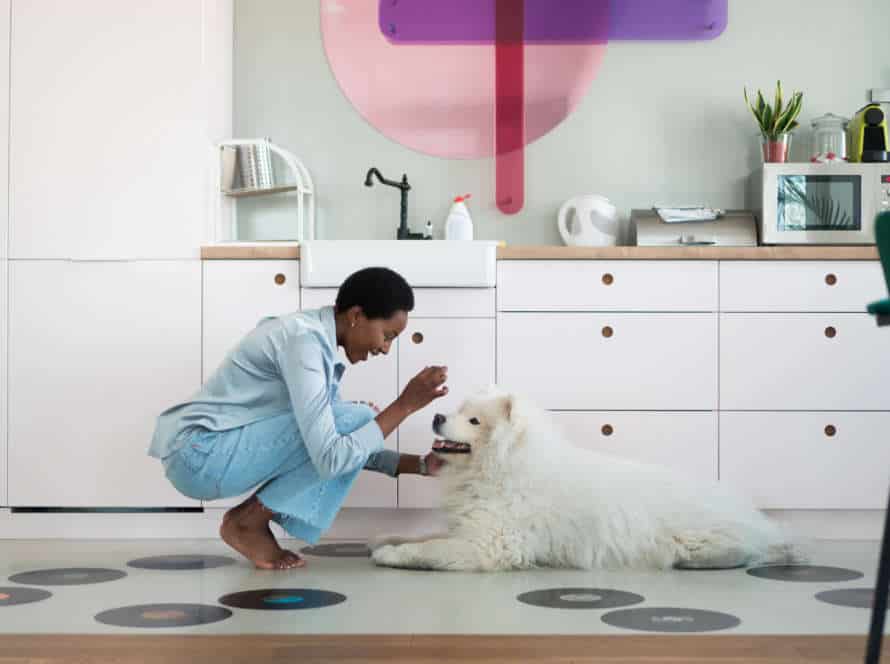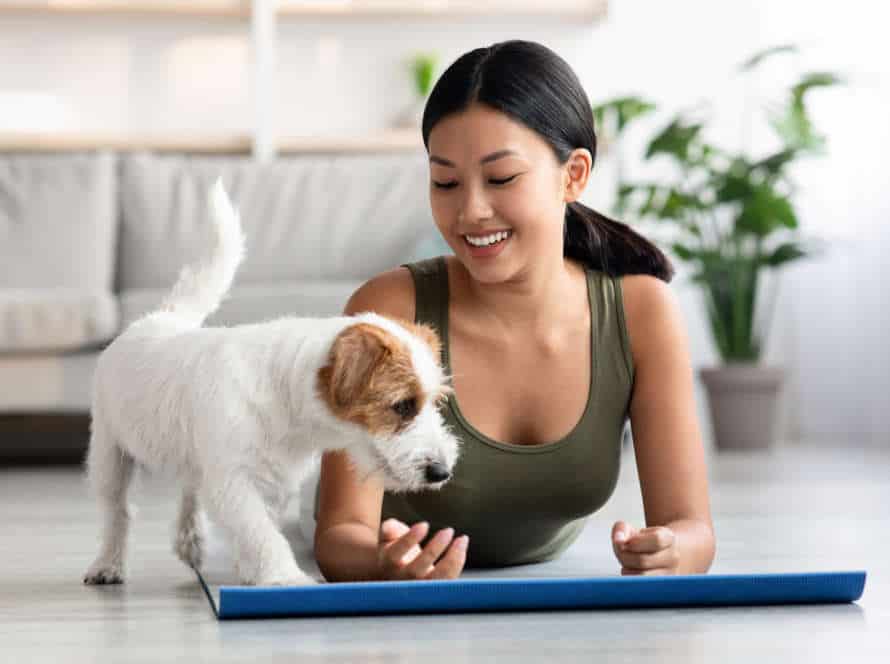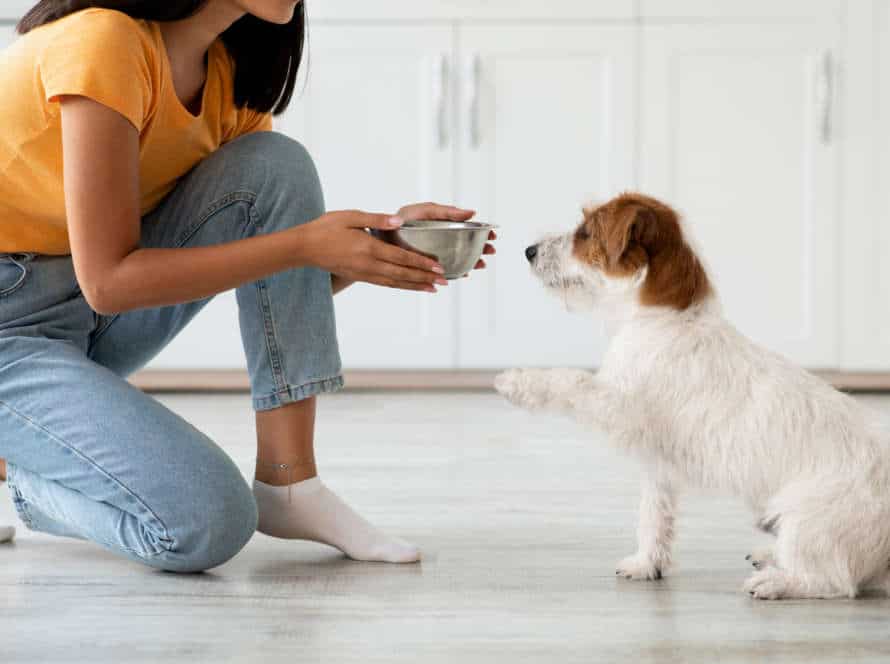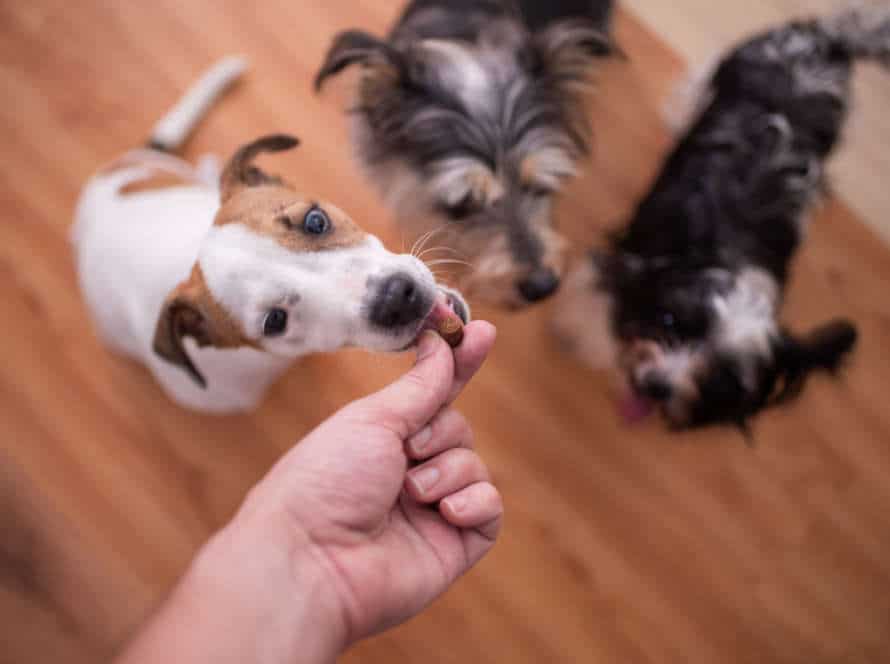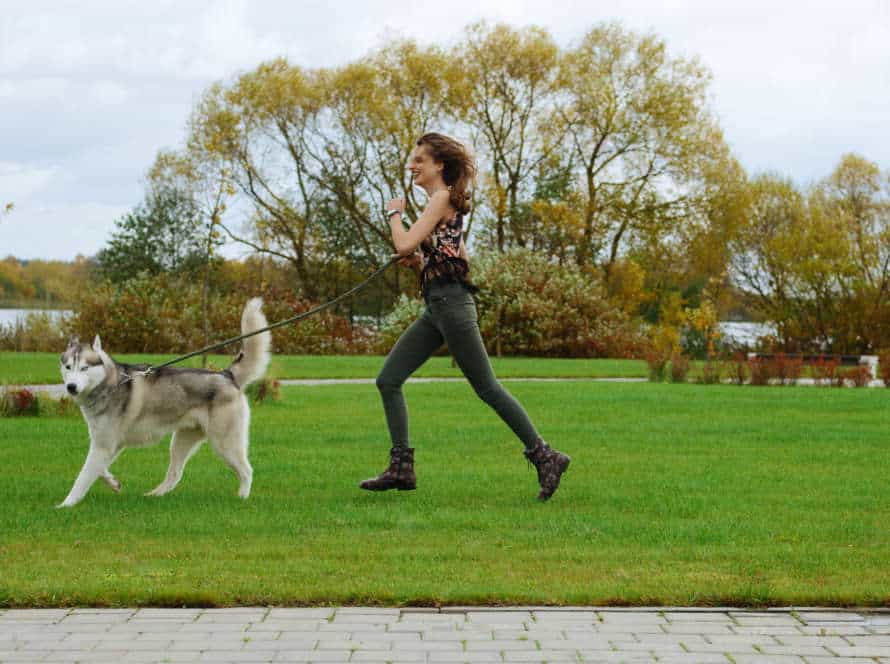The Essential Guide to Dog Grooming Basics
Grooming your pup is so important for keeping them clean, comfy and healthy! Here are the basics of how to do it:
- Brushing: Use a brush regularly to help remove knots, dirt and loose fur.
- Bathing: Use a shampoo made for dogs so their skin doesn’t dry out and to take away bad smells.
- Nail trimming: Trim the nails to stop them from splitting, breaking or hurting them.
- Ear cleaning: Clean ears with a gentle cleaner and cotton balls to get rid of wax and dirt.
- Teeth brushing: Brush their teeth with a toothbrush and toothpaste made for dogs.
Pro tip: Grooming not only helps your pup stay healthy, but it’s a great way to bond too. Plus, you can spot any health issues early on!
The Importance of Grooming Your Dog
Groom your pooch! It’s great for their coat and skin, and it’s good for their wellbeing. Get the low-down on dog grooming. We’ll cover basics like brushing, bathing, trimming nails and brushing teeth. Knowing these basics will keep your pup feeling tip-top!
Benefits for the dog’s health and well-being
Grooming your pup often is beneficial for their health and happiness! Here are several perks of regular dog grooming:
- A glossy, healthy coat and skin: Brushing your doggo eliminates loose and tangled fur, which prevents skin issues such as itching and infection. Plus, it encourages the spread of natural oils on the skin.
- Better hygiene: Grooming includes bathing, trimming claws, cleaning ears, and brushing teeth – all of which prevents bad odors and parasites.
- Detecting underlying health issues: When you groom your dog, you can find any lumps, skin irritations, and ticks on their body. These are easy to miss without regular grooming.
- More bonding: Grooming is a great way to bond with your pet, and to show them love and care.
Remember: Grooming isn’t just a luxury, it’s essential to their health. Pro tip: Use a calming shampoo, and make grooming fun by giving treats and toys!
Enhancing the bond between the owner and the pet
Grooming your pup is a must for their well-being and to strengthen the bond between you and your four-legged mate. Here’s why:
- Keeps their coat and skin in tip-top shape. Brushing and bathing regularly can avoid mats, tangles, and skin issues.
- Health check-up: Check for fleas, ticks, lumps, etc. while grooming.
- Bonding: Grooming can create a trust-filled environment, helping you build a stronger emotional bond with your pet.
- Exercise: Low-impact exercise for senior dogs. Improves circulation and movement.
Grooming sessions can do wonders for your dog! Plus, it’s great for encouraging a closer relationship with your furry buddy.
Preventing many common dog health problems
Grooming your pup is a must for their health and wellbeing. To keep them healthy, you must understand the basics. These include brushing, bathing, nail trimming, teeth cleaning and ear cleaning.
Brushing helps avoid matting or tangles. Bathing keeps their coat and skin clean. Trimming nails prevents discomfort or even breakage. Teeth cleaning prevents dental diseases and bad breath. And ear cleaning prevents infections and wax buildup.
Regular grooming is essential for your dog’s long-term health. Do it and they will stay happy and healthy for years!
Basic Grooming Tools for Your Dog
Grooming your pup? A must for all responsible pet owners! There’s a range of products and tools that can help. Knowing which ones are suitable for your pup is key. This guide will give you a rundown of the essential items you need to groom your dog, plus advice on how to use them right.
Brushes and combs
Brushes and combs are must-haves for any pup’s grooming routine. Here’s a quick guide:
- Brush: Loosen tangles and mats, spread natural oils, and promote healthy skin and coat.
- Slicker Brush: Tightly packed wire bristles for knot and tangle removal, suitable for most coat types.
- Pin Brush: Wire bristles tipped with plastic or rubber, best for long and silky hair.
- Bristle Brush: Soft, natural bristles, perfect for short-haired pups.
- Comb: Perfect for getting rid of stubborn tangles and mats, especially in long-haired dogs. Plus, it removes dead hair, dirt, and debris.
Grooming regularly with the right tools keeps your pup looking and smelling great, while also helping with their wellbeing.
Nail clippers and dremels
It’s crucial to keep your pup groomed for its health. Nail care is key. Nail clippers and dremels are essential tools for any dog owner.
Clippers are easy to get and use. But be careful – don’t cut the quick, the blood vessel in the nail. Use sharp and clean clippers. Take small cuts.
Dremels cost more and take longer. But they are precise and less likely to hurt your dog. Get your pup used to the dremel sound before using it. Gradually approach the quick if needed.
Hair clippers and scissors
Groomin’ your dog? Get yourself a good set of hair clippers and scissors. Clippin’ is great for big areas or shavin’, while scissors are best for detail-work like ’round the face and paws. Here’s what to keep in mind when pickin’:
Clippers: Look for sharp blades and adjustable length for different fur thickness. Motor should be powerful but not too loud or heavy.
Scissors: Comfort grip and sharp blades made for pets. Have diff sizes for precision ’round eyes, ears, and paws.
Keep clean and in good condition to prevent infections or injuries from dull blades or bacteria build-up.
Pro tip: Thick or matted coats? Get a dematting tool to make detangling easy and painless.
Bathing Your Dog
Bathing your pup is a must for hygiene and wellbeing. It’s also a great way to bond! Though it seems simple, there’s a few tips to remember for an effective clean. Here are the crucial steps:
- Get your pup ready – brush to remove any knots before getting them wet.
- Use warm water – make sure the temperature isn’t too hot or cold.
- Choose the right shampoo – avoid human shampoos, opt for specially formulated pet shampoo.
- Lather up – use gentle motions and cover the whole body.
- Rinse – use warm water to ensure all shampoo is fully removed.
- Dry – use a towel to remove excess water, then a blow dryer on a low heat setting.
Preparing the dog for a bath
Prepping for a bath is key for a smooth grooming experience. Here’s what to do:
- Gather supplies – dog shampoo, towels, a non-slip mat and brush/comb.
- Brush your dog’s coat to remove any mats or tangles.
- Put a non-slip mat in the tub/sink to stop your pup from slipping.
- Use lukewarm water and wet the coat, avoiding the head.
- Apply shampoo and lather it in, starting from neck to tail.
- Rinse off all the shampoo, then dry with a towel or blow dryer on low heat.
- Remember to reward your pup with treats and praise!
Choosing the right shampoo
Choosing the right shampoo for your pup is essential. With so many options, it can be tricky to decide. Here are some points to think about before making a purchase:
- Skin type: Dogs with dry, itchy, or sensitive skin need a gentle, moisturizing shampoo. Those with oily skin need one to help balance their oil production.
- Coat type: Different shampoos work better on different coats. Long-haired pooches may need a shampoo to prevent tangles and mats. Short-haired dogs may do better with a moisturizing shampoo.
- Age: Puppies need a gentle, tear-free shampoo that won’t irritate their eyes or skin. Elderly dogs may need one to soothe their aching joints and muscles.
- Health conditions: If your dog has a condition, like fleas or allergies, choose a shampoo that is specially formulated for it.
Pro tip – Pick a dog shampoo free of harsh chemicals, like sulfates, parabens, and alcohol. That’ll help avoid skin irritation and keep their coat in good shape.
Washing and drying techniques
Washing and drying your pup is vital for their cleanliness and wellness. Here are some tips to make it a success:
Bathing:
- Select a shampoo and conditioner just for dogs. Avoid human products which can irritate their skin.
- Use a showerhead, bucket or cup to wet their fur.
- Add shampoo and lather, avoiding eyes, nose and ears.
- Rinse off the shampoo and add conditioner if needed.
- Rinse with warm water until all soap and conditioner are gone.
Drying:
- Use a clean towel to dry, starting at the head and going down to their tail.
- Use a hairdryer on low heat, about 6-12 inches away from skin.
- Gently brush fur when it’s dry, to prevent knots and mats.
Reward your pup with praise and rewards throughout the process. It’s a positive and bonding time!
Brushing and Combing Your Dog
Grooming your pup is a must. Brushing and combing them is an important part. Doing this regularly can help remove dirt and debris. It can also reduce shedding, and keep the coat shiny and healthy. Let’s get to know the basics of brushing and combing your pup!
Why and how often to brush your dog
Brushing your pup is essential for its physical health and emotional well-being. It gets rid of dirt, old hair, plus mats. Plus it keeps the skin healthy and the coat shiny.
Here are the reasons why and when to brush your dog:
- Avoid skin issues – Brushing triggers glands in the skin which moisturise and improve skin quality.
- Decrease shedding – Brushing often gets rid of loose hair, reducing it on furniture and floors.
- Strengthen your bond – Brushing your pup is a great way to spend time together and strengthen your bond.
How often to brush depends on breed, coat and shedding patterns. Long-haired dogs need brushing every day. Short-haired dogs only need it once or twice a week. Ask a pro groomer or vet for advice.
The right way to comb your dog’s hair
Combing your pup is a key part of their grooming routine. Do it right for their looks and health. Here’s what to do:
- Pick a comb for their fur type (e.g. slicker brush for long-haired dogs, shedding blade for short-haired).
- Start at the head and go down to the tail, parting the hair. Be gentle– no tugging or pulling.
- Look for tangles or mats and use fingers or a dematting tool to get rid of them.
- Finish with a bristle brush to make the coat smooth and to spread the natural oils.
Combing regularly keeps your pup looking great and also stops skin irritation, tangles, and mats.
Techniques for removing mats and tangles
Mats and tangles can be painful for your pup. So, removing them is essential! Here are a few tips:
- Slicker brush – it has short fine wires close together and made to remove mats and tangles.
- Metal comb – great for small or moderate-sized mats.
- Scissors or clippers – if the mat is too big, cut with scissors or clippers.
Remember to use gentle tools and techniques. Don’t cut too close to the skin to avoid hurting your pet.
Trimming Your Dog’s Nails
It’s essential to trim your pup’s nails! This helps keep them from growing too long, which can be painful and uncomfortable. Breaking them can cause infection, so it’s important to be careful. Here’s how to trim your dog’s nails:
The importance of regularly trimming your dog’s nails
Trimming your pup’s nails is essential to their grooming, and also keeps them healthy and safe. Long nails can cause discomfort, pain, and even infections. Here are some reasons why trimming is important:
- It prevents pain and injuries to their paws.
- Long nails can affect how they walk, leading to joint and muscle issues.
- They can get caught on surfaces, causing tears or breaks in the nail.
Nail trimming isn’t always easy, so it can be helpful to get a professional groomer or vet to help.
How to properly trim your dog’s nails
Trimming your pup’s nails is essential to keep them healthy and happy. Here are some tips to do it right:
- Gather your tools: Get a quality clipper and have styptic powder or cornstarch nearby in case of bleeding.
- Know the anatomy: Identify the quick, which is the pink part that has nerves and blood vessels. Don’t cut it, it’ll hurt and bleed.
- Choose a good spot: Make sure your pup is comfy. Pick a well-lit area and get someone to help if needed.
- Start trimming: Hold the paw and use the clipper to cut the tip of the nail, away from the quick. If the nails are black and the quick is hard to see, cut small amounts until you see a white dot in the middle.
- Reward them: Praise and treat your pup during and after trimming. This will make the experience enjoyable for both of you!
Signs of overgrown nails and how to avoid quicking
Overgrown nails can be bothersome for your pup. Here are some signs that your furry friend’s nails may be too long and ways to keep from quicking them:
Signs of overgrown nails:
- You can hear tapping on the floor when your dog walks.
- Nails are curved downwards.
- Your pup limps or won’t walk.
How to avoid quicking:
- Utilize quality clippers or a Dremel designed for canine nails.
- Make small cuts, avoiding the quick (the pink part containing blood vessels and nerves).
- If quick is cut, use styptic powder or cornstarch to stop bleeding.
- Trim nails every 4-6 weeks for healthy, comfy paws.
Trimming Your Dog’s Hair
Trim your pup’s fur! It’s essential for their grooming. It’ll keep them looking neat, tidy, and healthy. Plus, it’ll help cut down on the shedding. Keep your pup looking and feeling their best by learning how to trim their hair correctly!
Deciding whether to trim or not
Trimming your pup’s hair or not? It depends on their breed, lifestyle, and coat type.
Factors to consider:
- Breed: Poodles & Shih Tzus need regular trims to avoid knots & tangles.
- Lifestyle: If they’re outdoorsy, a shorter cut prevents dirt & debris.
- Coat type: Thick-haired dogs might need trimming in the summer to stay cool.
- Preference: If you like them neat, a trim is the way to go.
Pro Tip: Get the right tools & do your research for best techniques for their breed & coat type before trimming.
Different approaches to trimming hair according to breed
Different dog breeds require various methods to trim their hair. This depends on the breed’s coat type, length and texture. Here are some tips:
- Terrier Breeds: Wiry, dense & rough hair. Clipping with a stripping knife or a clipper on long guard length is best.
- Poodle Breeds: Extensive grooming to avoid matting. Clipping using long or short guard length with a clipper.
- Spaniel Breeds: Long, wavy hair needs frequent trimming. Clippers with long guard length or scissors can be used.
- Double-Coated Breeds: Regular brushing & trim fur around ears & paws.
- Give pup breaks during grooming sessions & praise them for their patience.
Pro Tip: Start with clean, tangle-free coat & use sharp grooming tools.
Tips for safely trimming hair around sensitive areas
Groom your pup safely and comfortably. Tools like clippers with fine blades or scissors with rounded tips are best. Keep them still and calm before starting. Hold skin around sensitive areas, like ears and anus. If you’re not sure about certain areas, let a professional groomer handle it. After the session, show your pup plenty of love with treats and snuggles!
Cleaning Your Dog’s Ears
Grooming your pup’s ears is crucial! You should do it often. Cleaning them properly can cut the risk of infection, inflammation and other conditions that could cause your pup pain. Here, we’ll go over the basics of cleaning your doggo’s ears safely and effectively.
Understanding the anatomy of a dog’s ear
To clean your dog’s ears correctly, it’s essential to know the anatomy of a dog’s ear. It has three parts: the outer ear, middle ear, and inner ear.
The visible part is the outer ear. It’s made up of an ear flap and ear canal. The ear flap directs sound into the ear canal. Then, it goes to the middle ear. The middle ear is blocked from the outer ear by the eardrum. It has tiny bones that strengthen sound.
The inner ear controls balance, hearing, and equilibrium. It has the cochlea, which transforms sound waves into electrical signals the brain can interpret.
When cleaning your dog’s ears, you should focus on the outer ear and be gentle. This is to avoid hurting the eardrum or inner ear.
Identifying signs of ear infections and allergies
Ear infections and allergies are typical for doggies. To properly treat the condition, you must recognize the signals. Here are some signs to watch out for:
Ear Infections:
- Rubbing or scratching of the ears
- Bad smell or liquid coming from the ears
- Ear canal swelling or redness
- Tilting the head or shaking it to one side
Allergies:
- Excessive licking or scratching of paws, face or hips
- Skin rash or itching
- Face, eyes or muzzle swelling
- Sneezing or coughing
If you notice any of these signs, take your pup to a vet. To prevent ear infections, make sure to clean your dog’s ears using a vet-approved solution and process on a regular basis.
Techniques for cleaning your dog’s ears safely and effectively
Cleaning your pup’s ears is a vital part of their grooming routine. It also helps to stop ear infections and other ear-related health problems. Here are tips on how to clean your pup’s ears in a safe, effective way:
- Get an ear cleaning solution that your vet recommends.
- Use a cotton ball or pad to apply the solution to the inside of the ear.
- Gently massage the base of the ear. This helps the solution go deep into the ear canal.
- Get another clean cotton ball or pad to wipe away dirt, debris, or extra solution.
- Never use cotton swabs or other small objects. They could cause injury, and push debris further in.
Frequently Asked Questions
1. How often should I groom my dog?
It’s recommended that you groom your dog at least once a week. However, some breeds may require more frequent grooming. Consult with a groomer or veterinarian if you’re unsure.
2. What tools do I need to groom my dog?
You’ll need a brush, comb, clippers, scissors, and pet-friendly shampoo. The type of tools you need will depend on your dog’s breed and coat type. Consult with a groomer or veterinarian for recommendations.
3. Can I groom my dog myself or should I take my dog to a professional?
You can certainly groom your dog yourself, but it’s important to learn the proper techniques and use the appropriate tools. If you’re unsure, it’s best to take your dog to a professional groomer.
4. How do I bathe my dog?
First, brush your dog’s coat to remove any tangles or debris. Then, wet your dog’s coat thoroughly with warm water. Apply pet-friendly shampoo and lather well. Rinse the shampoo thoroughly with warm water. Towel dry your dog and, if necessary, use a blow dryer on a low setting.
5. What should I do if I accidentally cut my dog’s nails too short?
If you accidentally cut your dog’s nails too short, use a styptic powder to stop the bleeding. If you don’t have styptic powder on hand, you can use cornstarch or flour as a substitute. Apply pressure to the nail with a towel until the bleeding stops.
6. How can I keep my dog calm during grooming?
Playing soothing music or offering treats can help keep your dog calm during grooming. It’s also important to start the grooming process slowly and to be gentle with your dog. If your dog becomes anxious, take a break and try again later.

